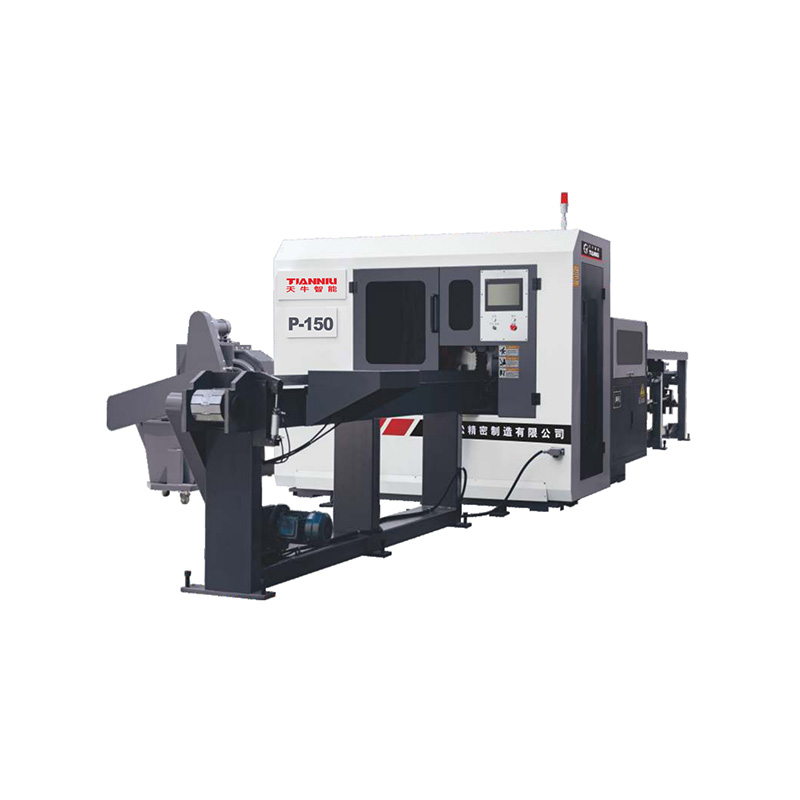Email: hujin@chinahujin.cn
Accurately Assess Blade Tension for Safe and Efficient Use of Horizontal Band Saw Machines
Understanding the Importance of Blade Tension
One of the critical factors affecting the performance, safety, and longevity of a Horizontal Band Saw Machine is the correct tension of the saw blade. If the blade tension is too low, it can cause deflection, inaccurate cuts, or even blade derailment. Conversely, over-tensioning can strain the machine’s components and shorten blade life. Therefore, maintaining suitable tension is essential for reliable and precise cutting operations.

Visual and Manual Inspection
The basic method of assessing blade tension is through a visual and manual check. Operators often press the side of the blade gently using their finger to observe the amount of lateral movement. A properly tensioned blade will have flex, generally around 1/4 inch of deflection with moderate pressure. However, this method is subjective and may vary based on operator experience, making it suitable only for quick assessments rather than precise calibration.
Using a Tension Gauge for Accuracy
For accurate measurement, a blade tension gauge is a reliable tool. These gauges are designed to provide a direct reading of the tension, usually in pounds per square inch (PSI). Most manufacturers recommend a tension level between 15,000 and 25,000 PSI, depending on the blade width and material. To use the gauge, the machine must be powered off and the gauge attached to a section of the blade. As the tension is adjusted via the machine's tensioning system, the gauge provides real-time feedback, ensuring suitable settings are achieved.
Observing Blade Behavior During Operation
An indirect but useful way to evaluate tension is by observing how the blade behaves while cutting. A blade that vibrates excessively, wanders off the cutting line, or produces an irregular kerf may indicate improper tension. In particular, under-tensioned blades tend to drift and cause uneven cuts, while over-tensioned blades might produce a humming sound or increase wear on machine bearings. Consistent and smooth cutting action is typically a sign that the blade tension is correctly set.
Reviewing Manufacturer Guidelines
Each Horizontal Band Saw Machine model may have specific requirements for blade tension, depending on the blade type and cutting application. Most manufacturers provide tensioning specifications in the operation manual or directly on the machine itself. Following these guidelines helps prevent unnecessary wear and ensures cutting precision. Some modern machines are even equipped with built-in digital tension indicators, simplifying this process further.
Routine Maintenance and Monitoring
Regular inspection and maintenance of the tensioning mechanism are equally important. Over time, components like springs, gears, or hydraulic systems used for blade tensioning may degrade, resulting in inconsistent tension. Periodic calibration and lubrication of these components ensure they function correctly and maintain accurate tension levels. Maintenance logs should include tension checks as part of the routine safety and performance schedule.
Training and Operator Awareness
Ensuring that machine operators are trained to recognize signs of improper blade tension is key to consistent machine performance. They should be familiar with both manual and tool-based tensioning methods, as well as understand the potential risks of operating with a poorly tensioned blade. A well-trained operator can often detect subtle cues, such as noise changes or cutting deviations, that signal a need for adjustment.
Conclusion: Striking the Right Balance
Determining the correct blade tension on a Horizontal Band Saw Machine involves a combination of experience, tools, and observation. Whether using a precision gauge or relying on performance cues, ensuring proper tension helps protect the machine, prolong blade life, and achieve clean, accurate cuts. Regular monitoring and adherence to manufacturer recommendations will support long-term operational efficiency and user safety.
 English
English русский
русский عربى
عربى






